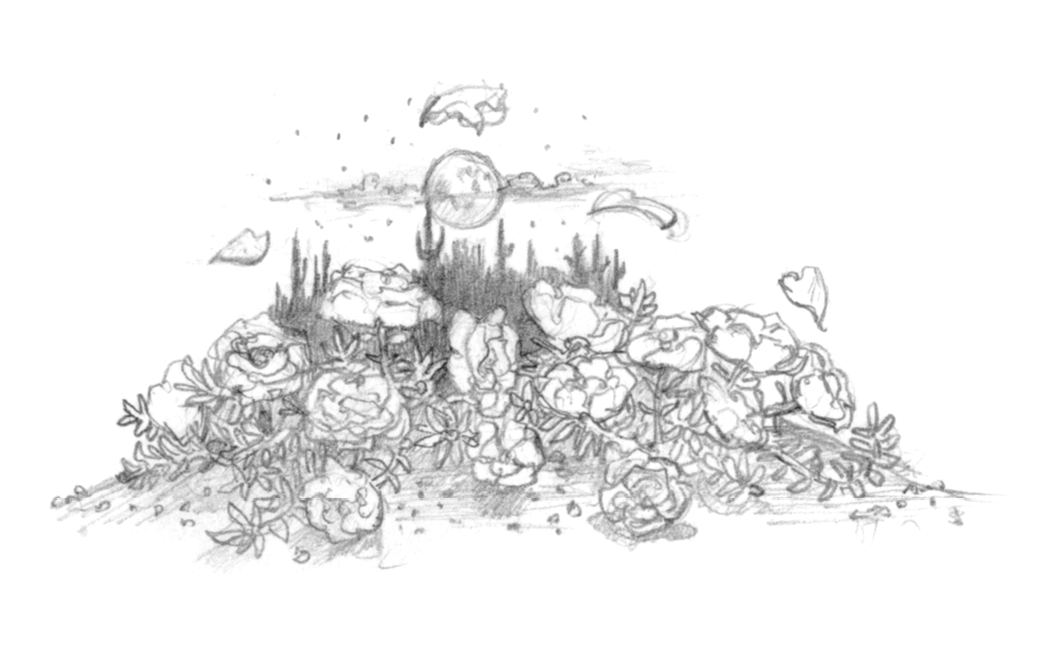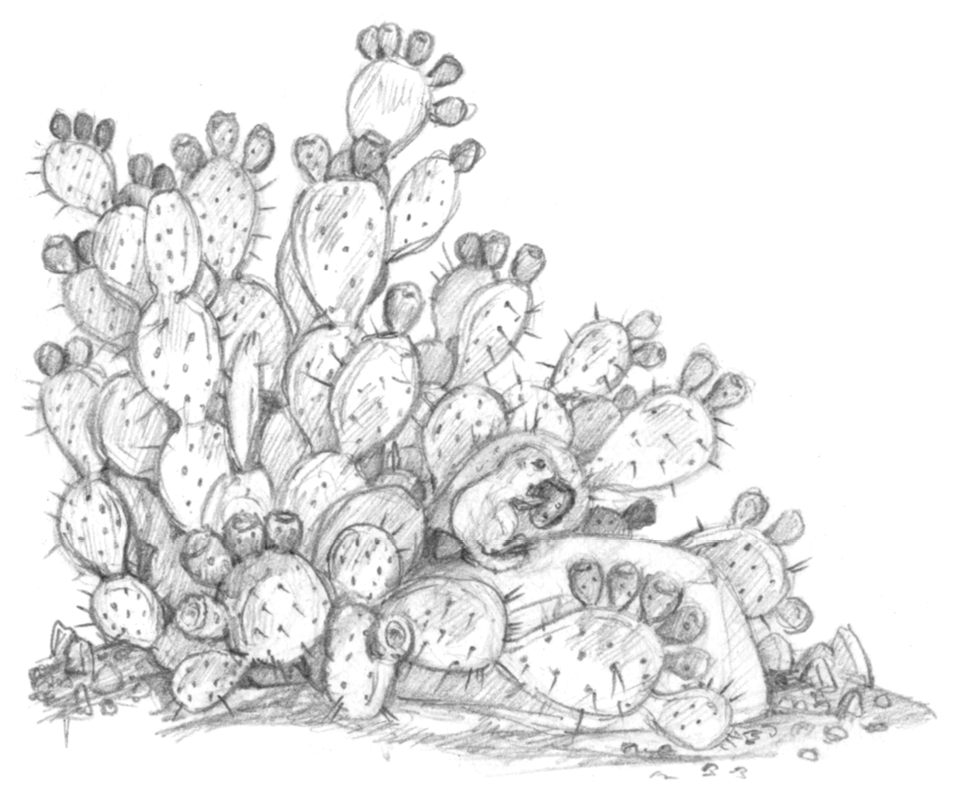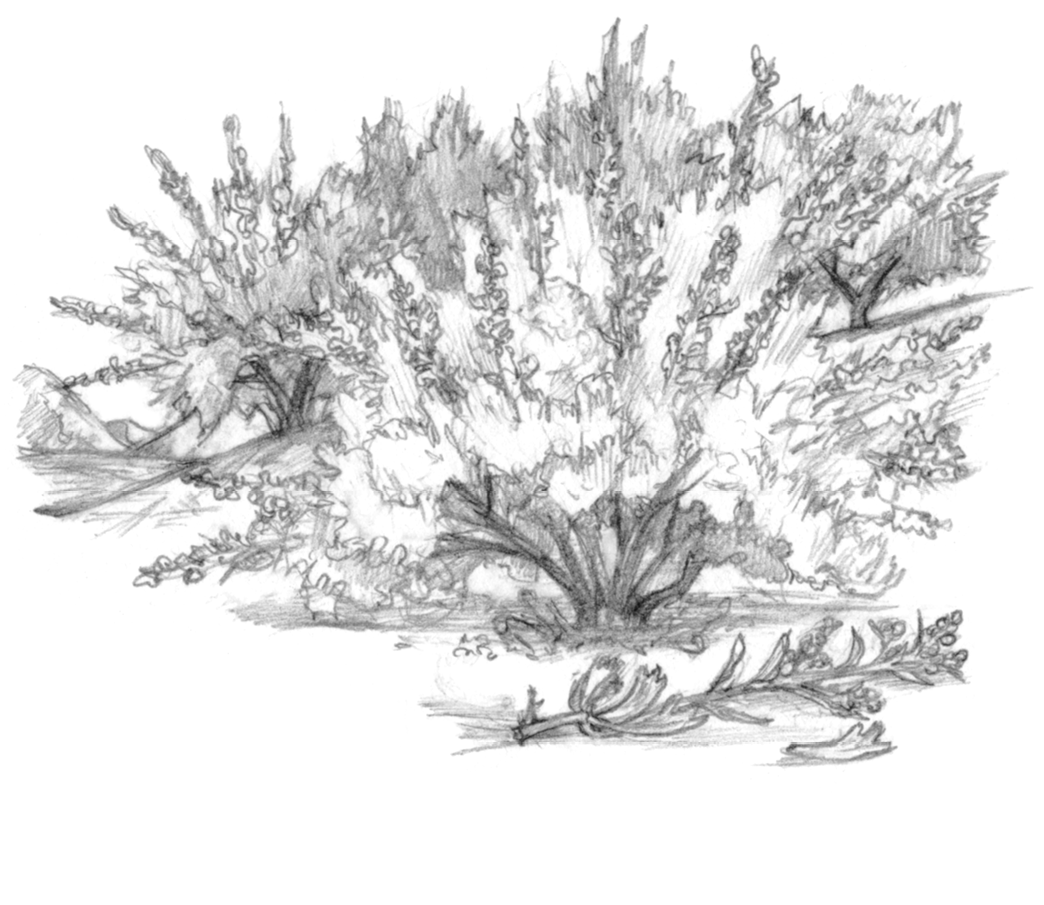Garden Witch's Herbal (8 page)
Read Garden Witch's Herbal Online
Authors: Ellen Dugan
Tags: #witchcraft, #wicca, #spells, #herb, #herbal, #herbalism, #garden, #gardening, #magical herbs, #herb gardening, #plants, #Pagan garden, #nature, #natural, #natural magick, #natural magic


lupin
Lupin/Lupine (
Lupin
spp.)
There are many varieties of the lupin that grow beautifully in drier, warmer climate gardens. This plant can be a herbaceous perennial, and there are also a few varieties of lupin that are annuals. (Check your local nursery for plants that are best suited to your garden and your climate.) Classically, this plant has long, narrow leaf stems with a circle of narrow leaves at the top. Leaves are composed of several leaflets that branch out from a central point. The eye-catching flowers blossom in June and are classically described as being “arranged in dense or open whorls on an erect spike, or raceme.” While blue is the most common flower shade, lupins may come in a variety of colors such as yellow, purple, dark pink, or white.
A pretty variety of lupin that is recommended for western gardens is the silvery lupine (
Lupinus argenteus
). This is a perennial plant that has silvery-grey foliage and grows up to two feet in height. The flowers bloom in midsummer and look like sweet peas. The blossoms are lilac to violet in color.
In the language of flowers, lupines symbolize imagination and voraciousness. Magickal uses include increasing your personal power and attraction. Classically, the lupin has the planetary association of Mars, but as many wild lupines are deep blue, including the annual Texas bluebonnet (
Lupinus texensis
), you might also consider the planetary influence of Venus. The suggested elemental correspondence is water. According to flower folklore tradition, all blue flowers are sacred to the goddesses of love, Aphrodite and Venus.
Garden Witch Tip:
It is important to note that there are several varieties of wild lupins that are considered poisonous to livestock. In fact, there are some sobering articles online from the USDA (United States Department of Agriculture) on the problems wild lupins can cause to grazing sheep and cattle.

moss rose
Moss Rose/Portulaca (
Portulaca grandiflora
)
This annual flower has a high heat and drought tolerance and grows up to eight inches in height. It comes in a variety of colors such as rose, pale pink, orange, yellow, and white. This annual has succulent-looking foliage and comes from the purslane family. Moss rose flowers can be found in double or single varieties, and the petals close up in the afternoon. Portulaca is one of my favorite annuals for late summertime containers, as they thrive in full sun and love the heat. I can only imagine how gorgeous they would be in a garden that was typically warm and dry.
Magickal associations for this flower are sleep, love, good luck, and protection. Scatter the flower petals in the four corners of your home to increase its protection and to repel negativity. Try tucking a pale white blossom under your pillow at night to rid yourself of nightmares. To encourage love, work with the pink-colored flowers. To give your spells a boost of energy, work with the yellow- and orange-colored flowers. The moss rose/portulaca is ruled by the moon (as are all plants in the purslane family), and its elemental correspondence is water.

prickly pear
Prickly Pear (
Opuntia phaeacantha
)
This cactus represents about a dozen species of the
Opuntia
genus of cactus in North American deserts. Prickly pear cactus can have yellow, red, or purple flowers, even among the same species. They vary in height from less than twelve inches to up to six to seven feet in height. The red fruits of the prickly pear are edible. Prickly pears have flat, fleshy pads that look like large leaves. The pads are, in reality, adapted branches, or stems, that provide several purposes, among them water storage, photosynthesis, and flower production.
The spines of this cactus are described as “modified leaves” that grow out from a small “wart” on the pad of the plant. There is another type of spine on the prickly pear as well: tiny barbed spines called
glochids
. These are located just above the cluster of regular spine, are yellow or red in color, and remove easily from the pads of the cactus. However, those tiny, colored spines are tougher to see and are more difficult to remove from the skin, should you be unfortunate enough to discover this the hard way.
To make your herbal magick even more unique and personal, you could also work color magick with the blossoms of the prickly pear: yellow for wisdom and red for protection and to shield your loved ones. Finally, you may use the purple-colored prickly pear blossoms for added power in any protection spell.
In the language of flowers, the prickly pear symbolizes satire. The planetary ruler for all cacti is Mars, and the elemental association is fire. On an interesting note, in the language of flowers, a cactus symbolizes endurance. The magickal association for all varieties of cacti is protection.
Protecting Your Property with Cactus
To add a bit of magickal protection to your property, you may wish to plant a cactus at each corner of your home's foundation, or you may decide to plant them at the outer four corners of your property to mark the area as a protected and sacred space. (If you do this, it is recommended that the cacti all be the same species.)
As to astrological timing, if you work this spell during a waning moon, then focus on removing all negative influences from your property. Conversely, if you happen to work this spell during a waxing moon, then concentrate on increasing the protective vibrations of your home and yard. Select your plants, and then dig all four holes. Then, one at a time, starting in the east, plant the first cactus. Move clockwise and plant the remaining cactus, moving from the south to the west and ending in the north. As you set the final cacti in place, say:
As above, now so below;
Around my home protection grows.
At the four corners I've set in place
These spiny plants that will guard my space.
To close up this green magick, I would pat the soil down firmly but gently, and water all the plants well to avoid transplant shock. Then hold your hands over the plants one at a time and say:
This protective cactus spell is spun from the heart,
Worked with my love and trust in my Green Witch's art.
Repeat these closing lines at each cactus, moving clockwise around the home or property. When you are finished, put away your gardening tools, and go relax and enjoy the rest of your day.
Garden Witch Tip:
Here is another magickal idea: cactus spines are often incorporated into Witch jars for protection and security. (It's a more natural component as compared to pins, needles, or broken glass.) Just be careful when you gather the spines from the cactus. Remember not to take too much and to leave the plant in good condition. A spine or two will suffice.

sagebrush
Sagebrush (
Artemisia tridentata
)
This small tree or shrub is described as vigorous and bears pungent and spicy-scented, grey green, wedge-shaped leaves; it is the state flower of Nevada. The leaves are covered in fine silvery hairs, which help the plant protect itself from transpiration, or water loss. The sagebrush blossoms in late summer/early fall and bears yellow flowers that are arranged in long clusters. Varieties of sagebrush cover large areas of the high, dry plains of the West. There are five subspecies of sagebrush, including the popular California sagebrush (
Artemisia californica
). The Native Americans valued the sagebrush plant for its healing properties and considered the smoke from dried, burning sagebrush a sacred purifier.
According to flower folklore, all types of sage symbolize both wisdom and skill. According to
Cunningham's Encyclopedia of Magical Herbs
, the sagebrush is classified as a plant that carries feminine energies. Its magickal uses are purification and exorcism. Burning dried sagebrush and waving the fragrant smoke around is a simple way to purify, or “smudge,” a place or person. The planetary association of sagebrush is Venus, and the elemental correspondence is earth.

shrubby cinquefoil
Shrubby Cinquefoil
In the West, this enchanting herb is identified as
Potentilla fruticosa
; however, shrubby cinquefoil has recently been reclassified as
Dasiphora floribunda
. Shrubby cinquefoil is a beautiful blooming shrub in the wild, but to the delight of gardeners, it has been cultivated extensively and is readily available at western nurseries. This deciduous shrub is multi-branched and described as possessing a spreading and upright habit. The shrub grows from one to three feet in height. The bark is reddish brown, and this plant has short and thin leaves. This variety of cinquefoil blooms from June through August. The five-petaled flowers are bright yellow and shaped like large buttercups.
In the language of flowers, the blossoms of the cinquefoil represent a beloved daughter and maternal love. Conversely, this is thought to be a plant with masculine energies. The five points on the leaves represent the magickal uses of the plant: love, power, prosperity, health, and knowledge. The cinquefoil, in all of its varieties, is an excellent hex-breaking plant. The blossoms and the foliage may be worked into charm bags or magick to break or neutralize a manipulative spell that another may have cast upon you. The planetary ruler for cinquefoil is Jupiter, and the elemental association is fire.
